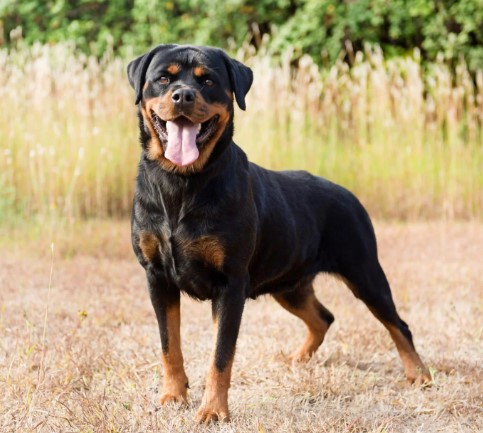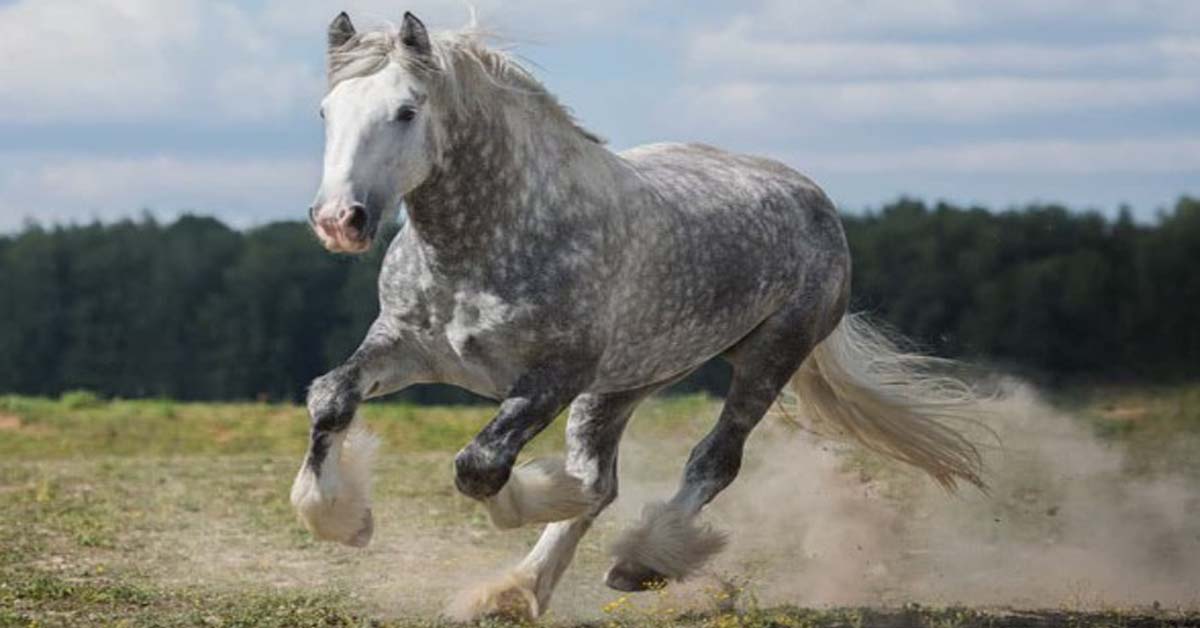The Thai Cat, also known as Wichian Mat or RTGS: Wichianmat, with RTGS standing for Wichianmat, which translates to ‘diamond,’ is a modified but older feline breed. It shares ancestral ties with the Western, contemporary Siamese cat but is distinct in its own right.
Originating from cats in Thailand, this natural breed goes by various names across different breeding groups, such as old-style Siamese, traditional Siamese, and classic Siamese. Additionally, it is recognized as Maat, and colloquially referred to as Applehead, a term that emerged in the 1950s. The International Cat Association emphasizes that the Thai Cat is a breed committed to preserving the original pointed cat of Thailand, striving to maintain its authentic form.
In contrast to the more extreme-specific Siamese of the modern style, the traditional Thai breed presents a more moderate appearance, staying true to its roots and heritage.
- Origin: Thailand
- Size: Medium
- Lifespan: 12 – 18 years
- Height: 21″- 23″
- Weight: 3.5 – 5.5kg
- Colors: Lilac or Blue Point
Thai cat Breed characteristics
Thai Old-style Siamese cats, sometimes simply referred to as Thai cats, are delightful companions adorned with charming features and endowed with playful and inquisitive personalities.
Similar to their Western Siamese counterparts, these felines harbor affection for everyone in the household, be it children, other cats, or cat-friendly dogs. Their sociable nature is evident as they dislike being alone, showcasing an abundance of love and affection.
Possessing intelligence and curiosity, Thai cats demonstrate a knack for learning tricks, especially when enticed with rewards. Whether you desire your feline friend to respond to its name or engage in lively games of fetch, a Thai cat is more than willing to oblige.
Incorporating a Thai cat into your family requires proactive measures to stave off boredom. These cats thrive on companionship and engaging activities. Without adequate stimulation, they may invent their own entertainment, delving into cupboards, opening drawers, and exploring their surroundings, including attempting to open doors and turning on faucets.
Harnessing their determined personalities, Thai cats can be directed toward puzzle toys and benefit from the company of another feline friend, resulting in a more balanced and enjoyable life.
Despite their mischievous tendencies, capable of bringing a smile to your face as they playfully splash in the bath or attempt to assist with post-dinner cleanup, the Thai Old-style Siamese also possess the ability to unwind profoundly.
During quiet moments like watching a movie or settling in for the night, they revel in snuggling and staying close, displaying their affectionate side.
Known for their talkative and genuinely loving nature, coupled with irresistibly large personalities, Thai cats prove to be exceptional pets, making them perfect companions for families willing to share time and attention.
| Apartment Living: 3 | Potential for Weight Gain: 1 |
| General Health: 3 | Intelligence: 4 |
| Child Friendly: 2 | Tendency to run away: 3 |
| Amount of Shedding: 2 | Playfulness: 5 |
| Energy level: 5 | Fur care: 2 |
| Dog friendly: 3 | Amount of exercise: 4 |

History Of Thai Cat
Despite the Thai cat’s extensive and distinguished history, it stands as a relatively recent breed. The earliest documented mentions of this breed date back to 1330 in the literary work “Poem about Cats.” During this period, they were known as the “Royal Cat of Siam,” situated exclusively in Buddhist monasteries, royal palaces, and prominent estates, as they were revered for being sacred and believed to bring happiness. In contemporary Thailand, these cats are still referred to as “Within-mat,” denoting menstrual diamonds.
In the transition from the 19th to the 20th century, Siamese King Rama V presented numerous Thai cats to European rulers during diplomatic excursions. Their distinctive appearance immediately captivated breeders’ interest, leading to the establishment of the breed standard in Europe as early as 1903. This standard underwent subsequent modifications to align with specific breeding goals.
Initially labeled as the Siamese cat, the breed’s visual characteristics gradually diverged from the original imported individuals. Over time, there emerged a growing inclination to restore the cats to their original appearance. Breeders embarked on a quest to find felines resembling the authentic breed, culminating in the recognition of traditional-looking Thai cats as a distinct breed with its own breeding standard in the 1990s.
Appearance
It’s not uncommon for Thai cats to be confused with Siamese cats, given their shared ancestry. Frequently labeled as “old-type Siamese cats,” Thai cats exhibit a surface resemblance to Siamese felines, yet possess a slightly more robust and rounded physique.
Significantly, in accordance with breed standards, Thai cats diverge from Siamese cats in a crucial manner. They harken back to their Southeast Asian forebears and embody the traditional Siamese type, characterized by a tranquil demeanor and a docile build.
Belonging to the oriental shorthair category, the Thai cat boasts an athletic build that, unlike the Siamese, is not overly slender. Their bodies showcase well-proportioned muscular necks, lending them a solid and sturdy appearance. A distinctive feature of the Thai cat is its head shape, characterized by a lengthy, flat forehead, a rounded skull, and a well-proportioned muzzle.
The chin and nose tip align in a straight line, and their ears are broad and positioned high on the head. These ear and head characteristics serve as primary distinctions from the Siamese breed. The coat of Thai cats is tailored to their Southeast Asian climate, featuring minimal undercoat and a soft, silky texture. While their fur is short, it does not lie flat against the skin.
Thai cats share the hallmark point coloration of Siamese cats. Points, or darker colors, appear on the ears, face, tail, and leg tips, contrasting with a lighter color on the rest of the body. This distinctive color pattern stands as one of the most crucial factors in differentiating the Thai cat breed.
Temperament
The Thai cat possesses numerous charming qualities that have won the hearts of pet owners, much like the affection garnered by the Siamese. Selective breeding seems to emphasize alterations in composition and the introduction of new standard colors and patterns.
Similar to the Siamese, Thai cats are vocal and energetic, displaying intelligence and a touch of quirkiness. Consequently, the same guidelines regarding keeping your pet entertained are applicable to them as well.
Thai cat Personality
They can be quite chatty, although their demands are generally less insistent or rigid compared to other exotic cat breeds. Thai cats form strong bonds with their families.
They exhibit a subjective nature, showing a preference for involvement in every aspect of their human activities, albeit in a “helpful” or, at the very least, supervisory manner. It’s not uncommon to find yourself rescuing your Thai cat from the bath or retrieving your coffee from their curious paws on a regular basis.
Intelligent, clever, and talkative, Thai cats often communicate their feelings to their owners. Unlike many cats, they have a particular fondness for travel, although their preference may lean towards lounging in the car, a habit that, understandably, poses safety concerns.
Health
Thai cats typically exhibit robust health, though occasional health issues may include heart disease, gangliosidosis, hyperesthesia syndrome, psychogenic alopecia, and respiratory infections.
Old-style Siamese cats display a lower tolerance for anesthesia drugs compared to other breeds, a characteristic shared with Western Siamese.
A few individuals may be born with crossed eyes, generally causing no significant issues apart from peripheral vision challenges. As cats age, there’s a possibility of progressive retinal atrophy (PRA) affecting their vision, particularly in later stages of life.

Care
Thai cats are known for their active and intelligent nature, requiring constant stimulation and ample space for exploration. While not well-suited for indoor confinement, they can thrive in apartment living if provided access to a protected balcony or terrace.
These sociable felines may experience loneliness when kept alone, but they readily form strong bonds with both other cats and humans. Thai cats enjoy incorporating their human companions into their daily routines, whether through games, cuddling sessions, or engaging “conversations.” Optimal conditions for a Thai cat involve an environment where their human caregivers can offer abundant attention, companionship, and diversions to prevent boredom.
Due to inbreeding in the early history of the Siamese, Thai cats may be prone to certain genetic diseases and defects. These issues can encompass recessive genes leading to tail abnormalities and hydrocephalus. Unfortunately, Thai kittens with hydrocephalus have a very limited life expectancy, typically surviving only a few days after birth. While the cause of this genetic defect remains unclear, its impact is distressing. Even if a cat doesn’t exhibit specific malformations or genetic diseases, it can still pass them on to its offspring. When both parents carry the same recessive gene, their kittens are at risk of inheriting that particular genetic defect.
Retinal degeneration is another concern for Thai cats, involving the gradual destruction of the retina due to metabolic disturbances in the surrounding tissue. Eye problems may emerge in the second year of life, initially causing sudden night blindness. Frequent squinting in Thais is often attributed to partial albinism, resulting from disruptions in melanin (pigment) metabolism. Generally, while these cats may squint more frequently, it usually does not lead to permanent problems.
Endocardial fibroelastosis
In Thai cats, endocardial fibroelastosis manifests as the thickening of the inner heart wall, potentially extending over the heart valves and often resulting in heart failure. Similar to the frequently occurring ductus arteriosus, the precise cause of this condition remains unknown. Persistent ductus arteriosus refers to the failure of the short-circuit connection between the aorta and the pulmonary stem to close in newborn kittens, leading to weakness or cardiac failure.
Thai and Siamese cats are also vulnerable to various health challenges, including cancers, congenital blood disorders, and metabolic disorders. Examples include the excessive accumulation of undegraded metabolic products such as amino acids or polysaccharides. The build-up of gangliosides in the brain can induce progressive damage to both the brain and central nervous system in affected animals at an early age.
It’s essential to note that while Siamese cats may be predisposed to certain genetic diseases, this does not guarantee the same for Thai cats. Ongoing efforts to develop genetic tests aim to identify diseases early on. Removing affected animals from the breeding pool also plays a crucial role in preventing the transmission of genetic defects to future generations of cats.
Best Food For Thai cat
- Royal Canin Fit 32 Adult Cat Dry Food
- Petcrux Lavender & Lemon Flavored Smart Clumping Cat Litter
- Parapet Real Chicken & Chicken Liver in Gravy Cat Wet Food
- Applaws Chicken Breast with Liver in Tasty Jelly Pouch Cat Wet Food
Feeding
The typical diet of a Thai street cat often comprises whatever they can scavenge, including scraps from trash, birds, rodents, and occasional handouts from compassionate individuals. If you choose to provide food for a street cat, they will derive similar nutritional benefits from a commercially formulated diet as that recommended for domestic cats.
Grooming
Give your cat a brief once-over using a soft brush or a gentle rub with your fingertips a few times a week to eliminate loose hair that could otherwise end up on your clothing and furniture. Enhance the sheen of your cat’s coat by following up with a gentle polish using a soft silk scarf or chamois.
As Thai cats are prone to periodontal disease, consider introducing them to teeth brushing using cat-approved flavored toothpaste.
Given their high activity levels, regular nail trimming is essential for Thai cats to prevent them from scaling drapes, clinging to furniture, and engaging in destructive behavior. While trimming a cat’s toenails is not overly challenging, establishing it as a routine is best commenced at an early age.
Training
Being an intelligent breed, Thai cats require mental stimulation. Utilizing positive reinforcement proves to be an excellent method for teaching your cat new tricks, and it’s an activity that kids can actively participate in. You can train your cat to walk on a leash and harness, respond to calls, perform high-fives, roll over, and master various other tricks.
Exercise
There’s no need to prompt your Thai cat to play – it comes naturally! These cats revel in zooming up and down their cat tree and find great pleasure in stretching on the scratching post.
Engaging in activities like leaping into windows and playfully concealing themselves while anticipating another cat’s pass-by – followed by a spontaneous surprise attack – are additional pastimes they relish. Through ample interaction and a variety of toys, you can fulfill your cat’s need for physical activity and derive entertainment from their playful antics.
Thai Old Style Siamese cats can readily grasp the art of walking on leashes. If you aim to provide your feline companion with a safe outdoor experience, walking is a delightful way to stay active and enjoy the outdoors together.
Adopting a Thai cat
If you’re considering adopting a Thai cat, a mix, or any other pet, explore our affiliated shelters to discover your potential new best friend.
“The Dig,” an expert-supported editorial by Fetch from the Dodo, addresses the questions you may overlook when consulting your vet or feel hesitant to ask at the dog park.
We’re here to ensure both you and your beloved companion have great days, even during challenging times. Fetch offers the most extensive pet insurance coverage and stands as the sole provider endorsed by The Dodo, the world’s leading pet brand.
See More Cat Breeds For Further Research
Frequently Asked Questions (FAQ)
Thai Cat Price in India || Thai cat For Sale in india
The cost of a Thai cat in India can vary depending on the source. Generally, a Siamese cat in India is priced between Rs. 15,000 to Rs. 40,000, and the Siamese cat prices in regions such as Kerala, Kolkata, Chennai, and Delhi tend to be comparable.
Is a Thai cat the same as a Siamese cat?
Thai cats are distinguished by their broad, apple-shaped heads, unlike the sharply pointed or wedge-shaped heads of modern Siamese cats. Additionally, Thai cats have shorter bodies compared to modern Siamese, although they are taller than Western domestic cats. While they share large ears with modern Siamese, Thai cats are generally more stocky and muscular.
Are Thai cats friendly?
Thai cats are known for their affectionate and loyal nature. They relish the company of their human companions and thrive on social interaction. Some enthusiasts even refer to them as “Velcro cats” due to their tendency to stay close to their families. Thai cats are also recognized for being quite vocal.
Are Thai cats rare?
In contemporary Thailand, this particular breed of Thai cat is considered a symbol of luck. Their popularity has grown significantly among the middle and upper classes, contributing to the perception of them as a rare breed. Thai Siamese cats stand out as distinct and unique when compared to Western-bred Siamese cats.
Why are Siamese cats special?
Siamese cats are renowned for their attractive features and affectionate temperament. If you seek a constant companion, the Siamese cat might be an ideal match. These stylish felines enjoy playtime and spending quality moments with their families, always ready to express themselves vocally.











